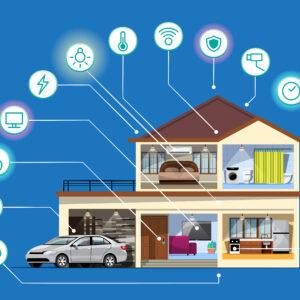Introduction
In today’s digital age, technology plays a central role in our lives. From smartphones and laptops to televisions and kitchen appliances, electronic devices have become indispensable tools that enhance our productivity, entertainment, and communication. However, with the rapid pace of the latest technology updates comes a significant downside: electronic waste, or e-waste.
What is E-Waste?
E-waste refers to discarded electronic devices that have reached the end of their useful life or are no longer in working condition. This includes everything from old smartphones and computers to refrigerators and televisions. According to the Global E-waste Statistics Partnership (GESP), approximately 53.6 million metric tonnes of e-waste was generated worldwide in 2019, and this number is expected to increase to 74.7 million metric tonnes by 2030 if no action is taken.
Environmental Impact of E-Waste
The improper disposal of e-waste poses significant environmental challenges. Electronic devices often contain hazardous materials such as lead, mercury, cadmium, and brominated flame retardants, which can leach into the soil and water supply if not disposed of properly. These toxins can contaminate ecosystems, harm wildlife, and pose serious health risks to humans.
Furthermore, e-waste contributes to air pollution through the release of toxic chemicals during incineration. Burning electronic devices releases harmful substances into the atmosphere, contributing to air quality issues and exacerbating respiratory problems for nearby communities.
Recycling and Resource Recovery
To mitigate the environmental impact of e-waste, recycling and resource recovery initiatives are crucial. Recycling electronic devices allows for the recovery of valuable materials such as gold, silver, copper, and aluminum, which can be reused in the manufacturing of new products. Additionally, responsible recycling practices ensure that hazardous materials are properly managed and disposed of, minimizing the risk of environmental contamination.
Many countries have implemented e-waste management regulations and established recycling programs to encourage responsible disposal practices. These programs often include collection centers where consumers can drop off their old electronics for recycling. In addition, manufacturers are increasingly incorporating design principles such as modular construction and easy disassembly to facilitate the recycling and reuse of electronic devices.
The Role of Consumers
As consumers, we play a crucial role in addressing the e-waste crisis. By adopting sustainable consumption habits and practicing responsible disposal, we can reduce our environmental footprint and contribute to a more circular economy. Here are some tips for managing e-waste responsibly:
- Repair and Reuse: Whenever possible, consider repairing or refurbishing old electronic devices rather than replacing them outright. Extending the lifespan of electronics reduces the need for new products and minimizes e-waste generation.
- Donate or Sell: If your electronic devices are still in working condition but no longer meet your needs, consider donating or selling them to someone who can use them. Many organizations accept donations of gently used electronics, and online marketplaces provide a platform for selling second-hand items.
- Recycle Responsibly: When it’s time to dispose of electronic devices, ensure that you recycle them through certified e-waste recycling programs. Look for recycling facilities that adhere to environmental and safety standards to ensure that your e-waste is handled properly.
- Educate Others: Spread awareness about the importance of responsible e-waste management among your friends, family, and community. Encourage others to adopt sustainable consumption practices and support initiatives that promote recycling and resource recovery.
Conclusion
The e-waste crisis presents a significant challenge for our planet, but by understanding its environmental impact and taking proactive steps to address it, we can work towards a more sustainable future. By embracing responsible consumption habits, advocating for recycling initiatives, and supporting policies that promote e-waste management, we can minimize the negative effects of electronic waste on our environment and communities.
Together, let’s tackle the e-waste crisis and build a world where technology coexists harmoniously with nature.
To get in touch with the latest technology updates and news visit our website All Day Technology and get updated news on the latest technology.











